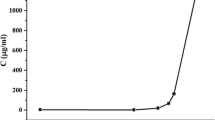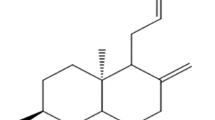ABSTRACT
Purpose
This study focuses on the formulation optimization, in vitro and in vivo performance of differently sized nano-crystalline liquid suspensions and spray-dried powders of a poorly soluble BCS class II compound i.e. Danazol.
Methods
A DoE approach was utilized to optimize stabilizer concentration and formulate danazol (BCS class II) nano-crystalline suspensions and dry powders via wet milling followed by spray drying. Solubility studies were performed to select best stabilizers. Particle size, PXRD, contact angle measurement and in vitro dissolution were utilized in characterization of the liquid and spray-dried powder formulations.
Results
The liquid nano-crystalline suspensions followed particle size-dependent dissolution rates i.e. faster dissolution for smaller crystals. The spray-dried nano-crystal powders did not show fast dissolution profiles compared to the liquid nano-crystalline suspension. The poor dissolution of the spray-dried powder correlated to its high LogP value (i.e. LogP 4.53) and poor wetting (or polar surface-area). In vivo bioavailability studies showed superior performance of the liquid nano-crystalline suspensions compared to other milled and un-milled formulations.
Conclusion
Wet-milling and spray-drying optimization for danazol nano-crystalline suspension was performed. This study indicates that drug candidates with high LogP values and low polar surface area may not be suitable for formulation as dry nano-crystals.









Similar content being viewed by others
Abbreviations
- AUC:
-
Area under the curve
- BCS:
-
Biopharmaceutics classification system
- Cmax:
-
Maximum concentration
- DoE:
-
Design of experiment
- NS:
-
Nanosuspensions
- PSA:
-
Polar surface area
- PXRD:
-
Powder X-ray diffraction
- SD:
-
Spray drying
- Tmax:
-
Time to reach maximum concentration
REFERENCES
Lipper RA, E pluribus product. Modern Drug Discovery. 1999. p. 55–60.
Hann MM, Oprea TI. Pursuing the leadlikeness concept in pharmaceutical research. Curr Opin Chem Biol. 2004;8:255–63.
Yamashita S, Fububayashi T. In vitro-in vivo correlations: Application to water insoluble drugs. In: BT Gattefosse, (ed) 1998. N91. p. 25–31.
Lipinski CA. Drug-like properties and the causes of poor solubility and poor permeability. J Pharmacol Toxicol Methods. 2000;44(1):235–49.
Lipinski CA. Poor aqueous solubility-an industry wide problem in drug discovery. Am Pharm Rev. 2002;5:82–5.
Caldwell GW et al. The new pre-preclinical paradigm: compound optimization in early and late phase drug discovery. Curr Top Med Chem. 2001;1(5):353–66.
Merisko-Liversidge EM, Liversidge GG. Drug nanoparticles: formulating poorly water-soluble compounds. Toxicol Pathol. 2008;36(1):43–8.
Merisko-Liversidge E, Liversidge GG, Cooper ER. Nanosizing: a formulation approach for poorly-water-soluble compounds. Eur J Pharm Sci. 2003;18(2):113–20.
Merisko-Liversidge E, Liversidge GG, Cooper ER. Nanocrystal drug particles: resolving pharmaceutical formulation issues associated with poorly water-soluble compounds. Abstr Pap Am Chem Soc. 2003;226:U528.
Liversidge GG, Cundy KC. Particle-Size reduction for improvement of oral bioavailability of hydrophobic drugs.1. absolute oral bioavailability of nanocrystalline danazol in beagle dogs. Int J Pharm. 1995;125(1):91–7.
Kumar S, Burgess DJ. Nanosuspension. Long acting injections and implants, 2012(Chapter 13): p. 239–262.
Noyes A, Whitney W. The rate of solution of solid substance in their own solutions. J Am Chem Soc. 1897;19(12):930–4.
Van Eerdenbrugh B et al. Solubility increase associated with crystalline drug nanoparticles: methodologies and significance. Mol Pharm. 2010;7(5):1858–70.
Verma S et al. A comparitive study of top-down and bottom-up approaches for the preparation of micro/nanosuspensions. Int J Pharm. 2009;308(1–2):216–22.
Verma S. Physical stability of nanosuspensions: investigation of the role of stabilizers on Ostwald ripening. Int J Pharm. 2011;406(1–2):145–52.
Van Eerdenbrugh B et al. Drying of crystalline drug nanosuspensions-the importance of surface hydrophobicity on dissolution behavior upon redispersion. Eur J Pharm Sci. 2008;35(1–2):127–35.
Chaubal MV, Popescu C. Conversion of nanosuspensions into dry powders by spray drying: a case study. Pharm Res. 2008;25(10):2302–8.
Lee J. Drug nano- and microparticles processed into solid dosage forms: physical properties. J Pharm Sci. 2003;92(10):2057–68.
Cerdeira AM, Mazzotti M, Gander B. Formulation and drying of miconazole and itraconazole nanosuspensions. Int J Pharm. 2013;443(1–2):209–20.
Van Eerdenbrugh B et al. Alternative matrix formers for nanosuspension solidification: dissolution performance and X-ray microanalysis as an evaluation tool for powder dispersion. Eur J Pharm Sci. 2008;35(4):344–53.
Van Eerdenbrugh B et al. Microcrystalline cellulose, a useful alternative for sucrose as a matrix former during freeze-drying of drug nanosuspensions—a case study with itraconazole. Eur J Pharm Biopharm. 2008;70(2):590–6.
Li W et al. Influence of drug physiochemical properties on absorption of water insoluble drug nanosuspensions. Int J Pharm. 2014;460(1–2):13–23.
ACKNOWLEDGMENTS AND DISCLOSURES
The authors are grateful to Dr. Anson Ma (Associate Professor, University of Connecticut) and Dr. Xiuling Lu (Assistant professor, University of Connecticut) for use of the contact angle goniometer and HPLC-Fluorescence, respectively.
Funding
This current research was funded and supported by FDA/CDER/OPS (Contract number HHSF223201110077A).
Author information
Authors and Affiliations
Corresponding author
Rights and permissions
About this article
Cite this article
Kumar, S., Jog, R., Shen, J. et al. Formulation and Performance of Danazol Nano-crystalline Suspensions and Spray Dried Powders. Pharm Res 32, 1694–1703 (2015). https://doi.org/10.1007/s11095-014-1567-0
Received:
Accepted:
Published:
Issue Date:
DOI: https://doi.org/10.1007/s11095-014-1567-0




